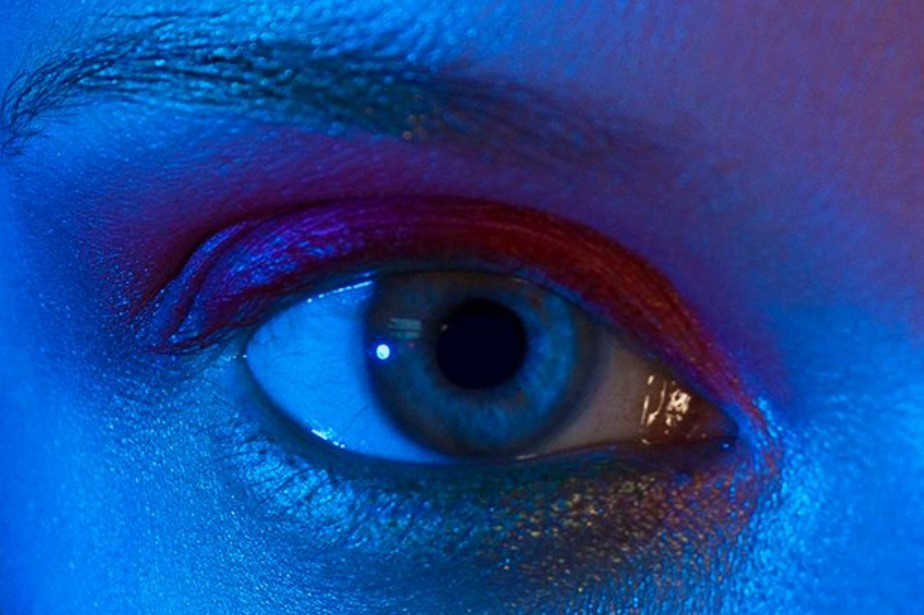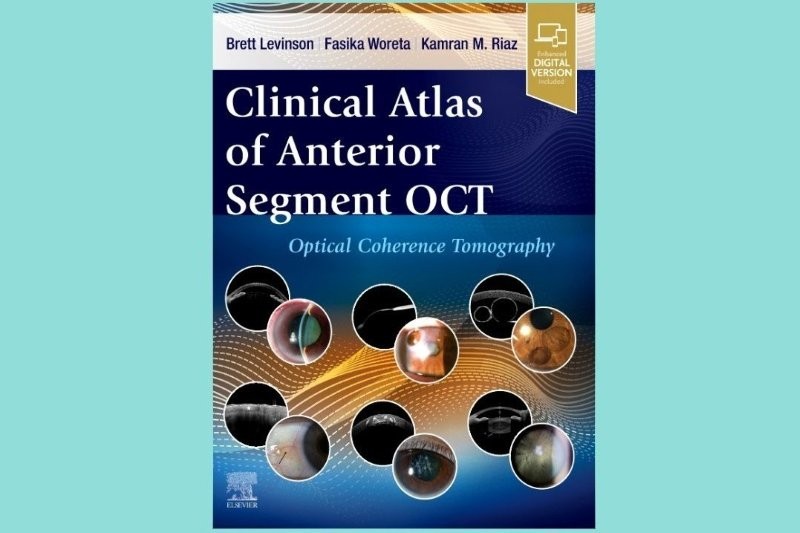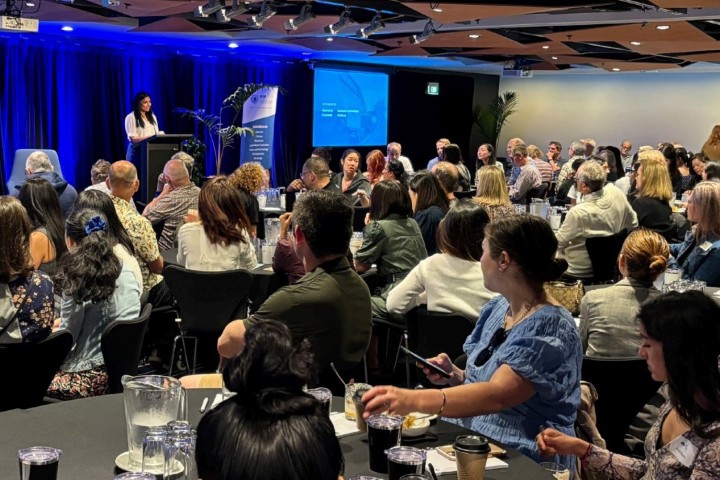Seeing red about blue light?
“Blue light damages your eyes,” trumpets the media. Overnight Instagram influencers dazzle in impossibly gorgeous selfies in impossibly magnificent locations, wearing blue light filtering glasses.
But how much of a problem is blue light? And how helpful are blue light filtering lenses?
Sifting the science from the hype
Blue light (490-45 nm) and high-energy visible blue light (HEV 450-400nm) refer to both blue and violet light. Not much longer than the 315-400nm of UVA and UVB’s 280-315nm, these short wavelength visible light bands are under scrutiny where eye damage from blue light is concerned and are found in natural light and artificial light. Both carry potential risks.
Natural blue light risk
Wavelengths between 300 and 400nm can penetrate the cornea, while higher energy short wave blue light (415 455nm) can penetrate the retina, causing irreversible photochemical retinal damage. Hoya’s global director of product marketing Robert Kaster says there is no current evidence definitively linking blue light with macular degeneration or other serious eye diseases. However, he says, “There is legitimate concern about the risks of cumulative exposure to the high levels of blue light contained in sunlight.”
Zeiss, meanwhile, released a white paper explaining how short but intense UV radiation exposure can temporarily damage the skin or surface of the eye, but it can heal. Chronic damage and subsequent irreversible diseases, however, are caused by much lower levels of exposure over longer periods of time. Though many studies showing the potential for retinal damage from blue light might not relate to humans in real world conditions, says Zeiss’ scientific affairs director Christian Lappe agrees with, “there is no doubt exposure to solar light without proper protection can trigger short and long-term damage to the eye, ocular structures and tissues.”
Artificial blue light risk
What about blue light from artificial sources? The New Zealand Ministry of Health’s current advice states, “Exposure to a lot of blue light in the evenings and at night can disrupt the body clock, leading to poor sleep and effects on other body processes that depend on the body clock, such as digestion. The possibility of other effects is also being investigated. However, levels from everyday sources, such as computers, phone displays and LED lights, are too low to cause any damage to the eye.”
However, the Royal Society Te Apārangi launched its Blue Light Aotearoa project late last year, urging caution on artificial blue light use. Its paper was released under the heading, Perpetual jetlag? Exposure to artificial blue light a risk in Aotearoa, with Society president Professor Wendy Larner FRSNZ saying, “There is growing concern about potential health problems from people being exposed to blue light from artificial lights and screens at night.”
Since then, the French Agency for Food, Environmental and Occupational Health and Safety (ANSES) has called for LED regulation, adding its voice to others, including the European Commission (EC), on potential blue light risks.
Dr Andrew Collins from the University of Auckland’s School of Optometry and Vision Science (SOVS) says he believes there’s minimal risk of acute damage from standard LED light sources, including device screens, but some cold-white and blue LED light sources, when viewed directly and close-up, could pose an acute risk for retinal toxicity damage, especially for children. Recent studies, including the EC report, diverge on “the risk of chronic or long-term effect of blue-rich light on the retina,” he adds.
The Austrian-based International Commission on Illumination (CIE) stated its position on the ‘blue light hazard’ in April this year, stating, “The term should only be used for photochemical risk to the retinal tissues of the eye (technically referred to as photomaculopathy), usually associated with staring into bright sources, such as the sun.” However, it said it recognises, “there is public concern over the non-visual influences of blue light on human health.”
Circadian rhythm disruption
There is plenty of evidence that blue light can interfere with our circadian rhythms. Less than two decades ago, a breakthrough study identified intrinsically photosensitive retinal ganglion cells (ipRGCs) in the eye. Melanopsin, a blue light-sensitive chemical in these cells, responds to light (especially around 480nm) and directly influences circadian rhythms and neuroendocrine regulation.
“Exposure to blue-rich light sources in the evening can delay sleep onset, duration and quality of sleep,” says Dr Collins. NZAO’s Andrew Sangster agrees, “It’s well-evidenced and applicable in the real world that high levels of blue light suppress melatonin and disrupt sleep.”
While Hoya’s technical white paper on the subject reports that significant levels of blue light from digital devices - in addition to increasing the risk of eye strain and the potential for circadian rhythm alteration - may pose incremental risks to eye health, which could take decades to fully understand.
Eye discomfort
With an aging population and an increasingly digital lifestyle, clinicians have also seen a marked rise in eye strain. Sangster puts this down to glare leading to eye fatigue and discomfort and says “scatter” from short blue wavelengths and the prevalence of cold blue LEDs are important contributing factors.
Enter blue light-filtering lenses
Well-respected lens manufacturers have invested heavily in development and marketing of lenses designed to mitigate the effects of blue light. So, are they the panacea?
Blue light absorption changes with age. Hoya’s white paper says in the eyes of a young child, more than 65% of HEV blue light reaches the retina, while in older adults whose lenses have yellowed with age, this might drop to 40% or lower. So, not everyone is equally at risk. Typically, blue-light ophthalmic lenses reduce the wavelength of HEV blue light and spectral transmission in that range by 5-20%, says Zeiss’ Lappe. But as little or no LED light emission falls under 445nm, these blue filtering lenses have little impact in ambient LED light, he says, adding new products may eventually address this. Both Hoya and Zeiss stress there’s confusion around blue light filtering and some information muddles up light sources (artificial vs sunlight), damage mechanisms, available lens products and older and newer research.
Several social media influencers have been lambasted for hyped-up claims and even mainstream advertisers have overstepped the mark. In May 2017, Boots Opticians in the UK was fined £40,000 for making misleading and unsubstantiated claims about its blue light lenses. However, the optometric world on the whole seems to see a place for these lenses. “As long as there is a controversial debate about HEV, especially the cumulative effects,” Hoya’s Kaster says, “it is generally prudent to limit the cumulative levels of blue light reaching the retina over a person's life.” While a recent Melbourne University survey of 372 optometrists found three quarters had prescribed blue light-filtering lenses, with nearly 90% recommending their use for computer and electronic devices and nearly half to counter potential retinal damage from daily UV exposure, and Optometry Australia says it’s working with experts to develop guidance for its members in this area.
So, do blue light-filtering lenses really work?
Late last year, the UK College of Optometrists said, “The best scientific evidence currently available does not support the use of blue-blocking spectacle lenses in the general population to improve visual performance, alleviate the symptoms of eye fatigue or visual discomfort, improve sleep quality or conserve macula health.” While the French Agency, ANSES, stressed the effectiveness of treated lenses, protective glasses or special screens designed to reduce blue light exposure was highly variable and their effectiveness in preserving circadian rhythms was not proven. It encouraged the establishment of standards to define performance criteria for blue light protection equipment.
NZAO’s position is that blue light-filtering lenses are of equivocal benefit for retinal protection, says Sangster. “What’s more important is UV protection for the retina and front of the eye.” When it comes to looking after our sleep patterns, Dr Collins says lens effectiveness is also highly variable depending on the device and, in some cases, probably not sufficient to decrease the effects of blue-rich light exposure in the evening on sleep disruption. “Greater benefit is likely to be seen when prescribing for susceptible groups including children and adults with existing sleep disruptions.”
Sangster likewise said he was not aware of studies showing the lenses had significant benefit when it came to sleep. The NZAO’s position was to limit device use prior to bedtime, especially for children and adolescents whose eyes are still developing protective mechanisms. But it’s not just spectacle lenses being called into question. New Zealand ophthalmologist Dr David Worsley explains, “A number of blue light-filtering intraocular lenses (IOLs) now have regulatory approval (as refractive rather than photo-protective). They are most likely very safe. However, to evaluate whether there is a benefit in relation to age-related macular degeneration (AMD), a very large, long and expensive trial would be required. With these IOLs already on the market, there is no commercial incentive for a clinical trial. Rather, with a neutral or even a negative outcome possible, there is arguably an incentive not to do a trial.” It’s important for surgeons adopting these IOLs to be mindful of this limitation when advising the patient, he says.
Published this year in JAMA Ophthalmology, a Cochrane systematic review about blue light-filtering intraocular lenses (IOLs) for retinal protection concluded, “using blue light-filtering IOLs to impart benefits to the macula is currently not supported by the best available clinical research evidence.”
Patient recommendations
Clinicians are widely encouraged to share recommendations other than blue light-filtering lenses for managing blue light exposure with their patients. These include:
- Wearing UV protection for eyes, especially outdoors
- Using standard tinted lenses to increase eye comfort
- Taking regular breaks from devices
- Limiting screen time, especially for children and adolescents, and especially the hour before bedtime
- Keeping a good working distance from screens
- Turning eye comfort settings on if a device has them
- Using warm lighting to mitigate glare
- Eating leafy greens to help reduce oxidative stress


























